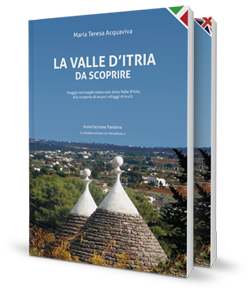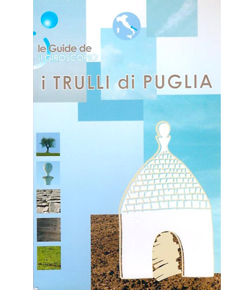Text translated by Google translate.
The name suggests the circular shape of the old town clearly visible when, in Locorotondo, you reach from the Valle d’Itria along the road Statale dei Trulli coming from Martina Franca.
The village crowns the hill with its array of compact houses with very sharp sloping roofs, which seem to redraw the ancient wall. The dome and bell tower of the Mother Church dedicated to St. George stand out.
Precisely the cult for St. George takes us back in the time of about a thousand years when the territory of Locorotondo was fiefdom of the abbey of St. Stephen, a Benedictine monastic site on the Monopoli coast founded by the Norman Goffredo D’Altavilla, then Earl of Conversano. With a Privilege the Count granted the Benedictines towers, farms and farmhouses; among the farmhouses was that of St. George. There were few houses and a church dedicated to the Saint, more or less on the site of the current Mother Church. Sources of the 12th century document a locus qui dicitur rotondus, also locus rotondus that a few centuries later became loco rotundo, all place names that already highlighted a dwelling with the characteristic of the houses arranged peripherally in round sequence.
In the 14th century the fiefdom of Locorotondo passed to the Knights of Malta, while the centuries to come were marked by the various passages of power at several houses, to the Caracciolo, the dukes of Martina Franca, who ruled until the end of feudalism. Walls and castles no longer exist; two columns recall the old Porta Napoli to the east, representative access in the historic center, while to the west of the ancient village still exists Porta Nuova. The old town is dominated by the typical popular architecture of the countries of the Murgia dei Trulli, tinged with lime milk that creates, especially on sunny days, strong clear-cut games.
With your eyes at the top you can see everywhere the cummerse, that is, the roofs with two sloping roofs covered with limestone chiancarelles, the same as the cones of the trulli. This type of roof is also typical of the whole of Murgia, but in Locorotondo they are particularly sharp enough to recall architectural profiles of northern Europe. One is astonished by the care the inhabitants have for the city; everywhere, in the old town, balconies and flowery terraces, every elderly woman repeats the ancient ritual of washing beyond her home even the stretch of road in front, a sign of love for the place and welcome towards the visitor. Narrows that intersect and cross in small wide and paths that, surprisingly, open with a guard on the enchanting Itria Valley.
The holy Patron Saint St George is dedicated to the beautiful church in the neoclassical style, in whose eardrum stands the equestrian statue of the saint. The most heartfelt sacred festival, however, is the one dedicated to the patron saint Rocco to whom a church in the neoclassical style is dedicated. The cult of St. Rocco spread over the Murgia dei Trulli in the 17th century because, by tradition, it protected the inhabitants of the cities and the peasant from a plague epidemic. For this reason, the Saint is now the Protector of many urban centers. In Locorotondo, St. Rocco is celebrated solemnly in mid-August. On August 16th of each year, the fireworks of St. Rocco is renewed, attracting visitors from all over the world. The race of fireworks is made particularly impressive because it takes place in the Valle d’Itria at the foot of the ancient country, offering the view of the fireworks display to all the neighboring countries.













